Puerta Gwanghuimun (광희문)
2.4Km 2021-02-24
Toegye-ro 344, Jung-gu, Seúl
+82-2-3700-3900
La puerta Gwanghuimun fue construida en el año 1396, durante el 5º año del rey Taejo, en el sureste de la capital (Seúl). Se suele conocer también como puerta Sugumun (puerta del canal de agua) y fue usada como Sigumun, que literalmente significa 'puerta del cadáver', ya que las procesiones funerales pasaban por esta puerta cuando salían por el este.
Durante la Guerra Imjin (invasión japonesa de 1592 a 1598), las puertas de la fortaleza fueron destruidas a tal grado que fue practicamente imposible encontrar el lugar original de su localización. Sin embargo, los esfuerzos de reconstrucción se iniciaron en 1711 (37º año del reinado de Sukjong) y la puerta del canal de agua fue restaurada con forma de torre. Desde ese momento, la puerta quedó intacta, incluso cuando los muros de la fortaleza fueron derrumbados para construir caminos durante la ocupación japonesa, pero la Guerra de Corea la dejó con graves daños y quedó abandonada. En 1975, empezaron los trabajos de reconstrucción para recolocar la puerta Gwanghuimun a 15 metros más al sur de su localización original, que se encontraba en medio de la carretera.
Mercado Pyoung Hwa de Seúl (서울 평화시장)
2.4Km 2024-01-23
Cheonggyecheon-ro 274, Jung-gu, Seúl.
Mercado Dongdaemun y Shopping Town de Dongdaemun (동대문 종합시장·동대문 쇼핑타운)
2.4Km 2025-04-07
Jong-ro 266, Jongno-gu, Seúl.
El Mercado Dongdaemun es uno de los mercados más representativos de Corea y fue fundado el 23 de diciembre de 1970, como el mayor de su clase en Asia. En diciembre de 1985 se estableció Shopping Town de Dongdaemun y ahora el área abarca cinco edificios en total (A, B, C, D, y Shopping Town). Hay más de 5.000 tiendas situadas en este complejo que venden telas diversas, materiales, accesorios, artículos para bodas, etc.
Inwoohouse [Korea Quality] (인우하우스 [한국관광 품질인증])
2.4Km 2025-07-18
9, Gyedong 6-gil, Jongno-gu, Seoul
Festival de Primavera del DDP: Parque Temático del Diseño (DDP 봄축제 : 디자인 테마파크)
2.4Km 2025-04-16
Eulji-ro 281, Jung-gu, Seúl
02-2088-4957
Fatum (파툼)
2.5Km 2019-12-20
86-5, Samcheong-ro, Jongno-gu, Seoul
+82-2-739-9888
FATUM is famous for its great view of Samcheong-dong. Each floor is decorated with a different theme, from natural rocks on the first floor, comfort on the second floor, and indoor viewing places on the third and fourth floors, and outdoor seats on the fifth floor. The view features beautiful scenery including Bugaksan Mountain, Inwangsan Mountain, and Gyeongbokgung Palace at once, as well as a fantastic sunset from the café.
Nuwa [Korea Quality] / 누와 [한국관광 품질인증/Korea Quality]
2.5Km 2021-03-29
3-1, Pirundae-ro 5na-gil, Jongno-gu, Seoul
This hanok (traditional Korean house) is located deep in the Seochon Village, west of Seoul’s Gyeongbokgung Palace. Its tasteful renovation of a small 33 m2 hanok made it highly popular among the younger guests. The courtyard has a low maple tree and tastefully arranged stones, while the hanok is capable of accommodating up to 2 persons.
This L-shaped hanok has a full window wall facing the living room, which is furnished with a low walnut table and a bathtub. Visitors can enjoy premium tea at the table. The bathtub, which is connected to the table at one end, can be used mainly for a foot bath with bath salts that assist circulation. There is also a restroom in the building.
Nuwa’s bedroom has a circular window, much like the full moon, with a view of the garden and the fringes of the Inwangsan Mountain.
Centro Comercial Doota (두산타워)
2.5Km 2024-01-24
Jangchungdan-ro 275, Jung-gu, Seúl.
Mercado Tongin (통인시장)
2.5Km 2025-07-01
Jahamun-ro 15-gil 18, Jongno-gu, Seúl.
Dialogue in the Dark (Sucursal de Bukchon) (어둠속의대화 북촌점)
2.5Km 2025-05-12
Gahoe-dong, Jongno-gu, Seúl
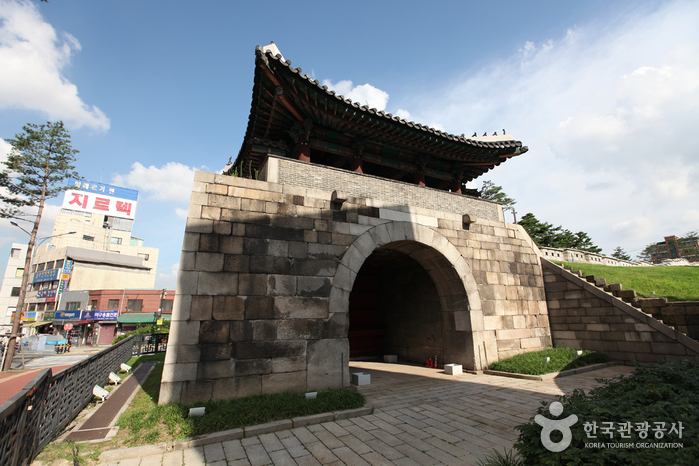

![Inwoohouse [Korea Quality] (인우하우스 [한국관광 품질인증])](http://tong.visitkorea.or.kr/cms/resource/56/3009456_image2_1.jpg)
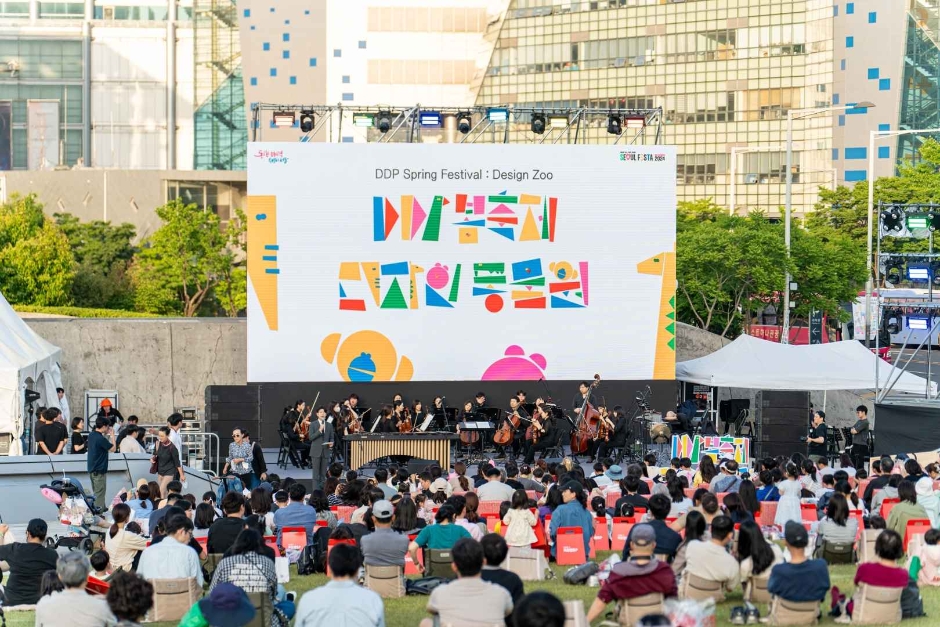
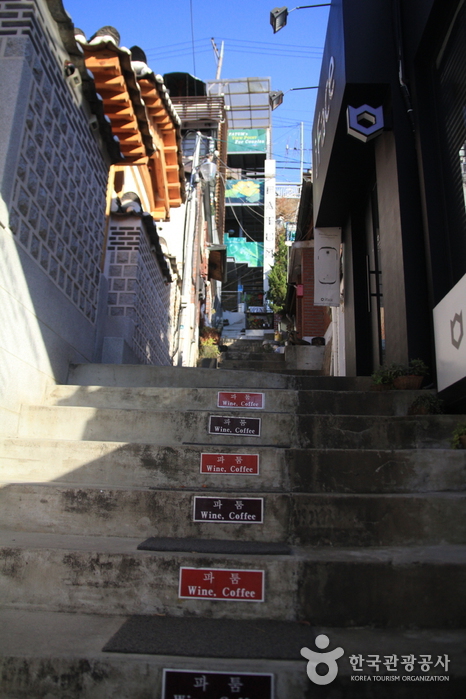
![Nuwa [Korea Quality] / 누와 [한국관광 품질인증/Korea Quality]](http://tong.visitkorea.or.kr/cms/resource/07/2707607_image2_1.jpg)

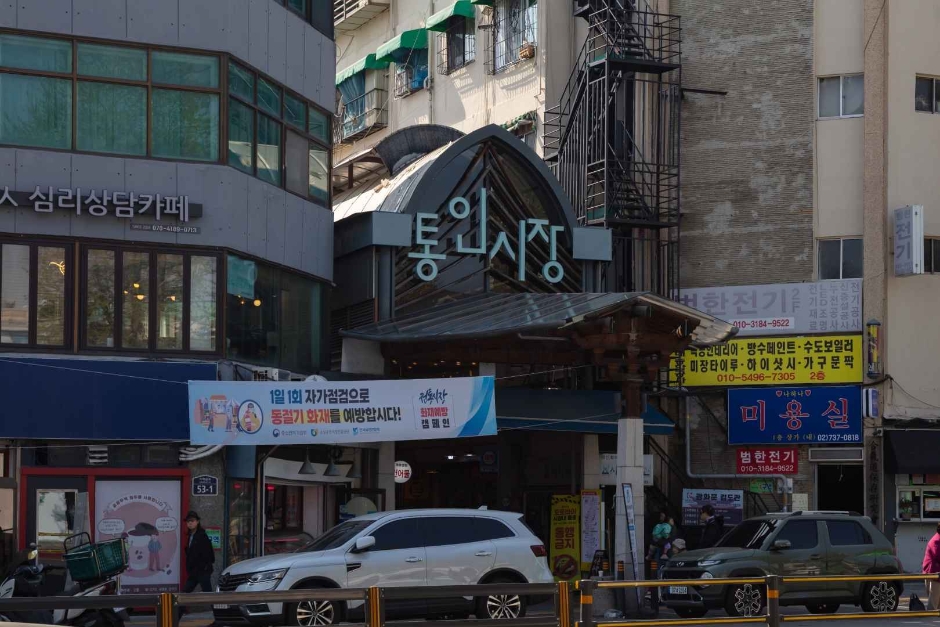
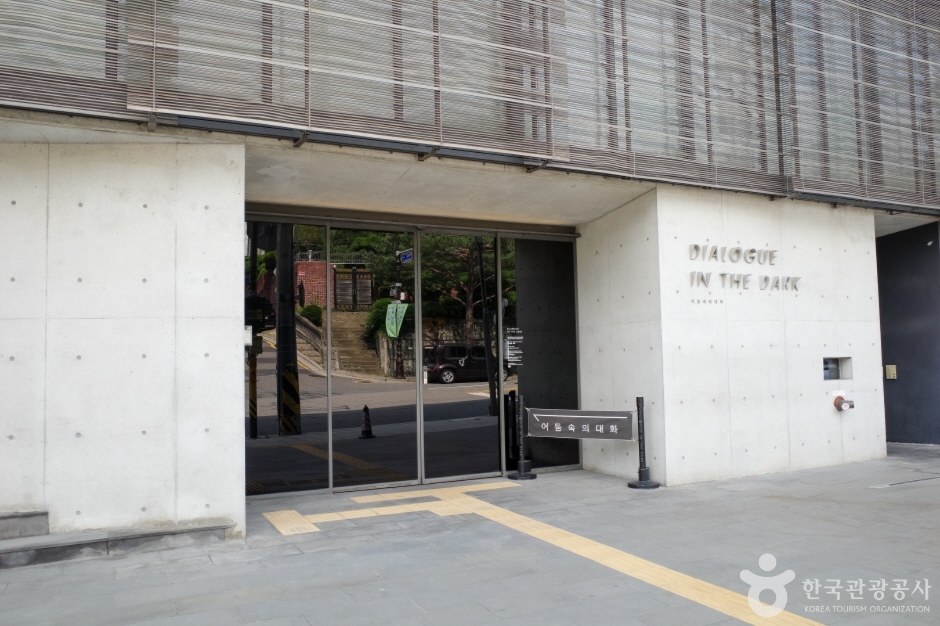
 Español
Español
 한국어
한국어 English
English 日本語
日本語 中文(简体)
中文(简体) Deutsch
Deutsch Français
Français Русский
Русский